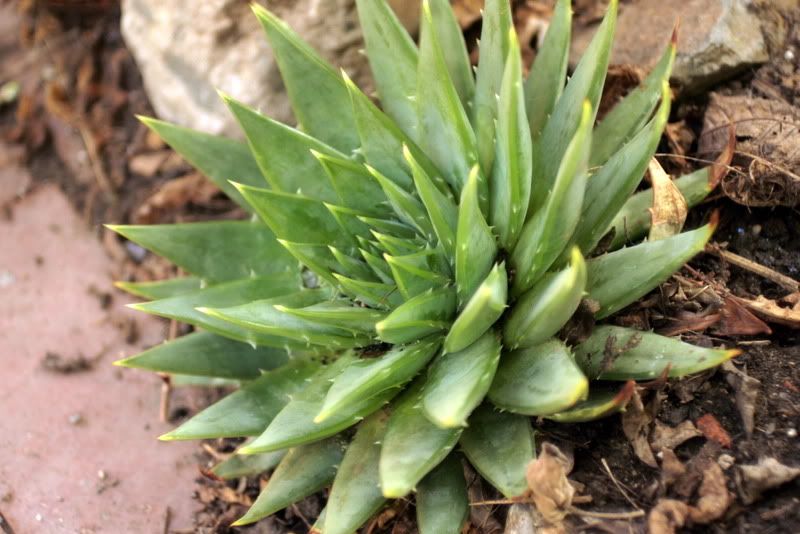You can tell by the leaf litter that this guy is in the ground now, not in a pot anymore. In zone 10, planting in the ground is an option, since there’s no fear of frost damage.

But there are other enemies besides frost. This aloe is trickier than most other aloes I grow. Let’s further refine that to trickiest by a landslide.
The only real problem I’ve encountered with aloes is the inescapable fact that many of the beauties in the genus grow large and my garden is small. But Aloe polyphylla is exacting in its requirements. It wants a bit more moisture but perfect drainage. I moved the aloe out of a pot because you just can’t forget to water him, unlike most other succulents I grow which simply “pull in their horns” to deal with the occasional missed drink. In zone 10, Aloe polyphylla is sensitive to the cold, heavy soil of winter, and in my amended clay the entire stemless plant has been known to slough off like a cheap toupee by spring. I have planted this aloe at a slight angle, which seems to have been the key to getting it through this fairly rainy winter season. Shade from afternoon sun is also appreciated. That lovely celadon green of its leaves will tip burn in full sun.
So it’s off to a good start this spring. (With such touchy plants, it’s OK to consider bare survival a good start.) There remains the small problem of a failure to spiral. I’ve yet to have an Aloe polyphylla spiral for me. A possible theory I invented to ease the disappointment is that rampant tissue culture of this aloe is somehow at the root of the problem. As fun as it is to make up wild theories, the sober facts can be found on the website of the Cactus and Succulent Society of America, where it advises that “plants must reach a diameter of at least 8-12″ before they begin to spiral — and they may spiral either left or right — and amass about 90 leaves in order to support production of the large bloomstalk.” Mine currently measures 8 inches across, and I know I’ve had a nonspiraling plant well over a foot in diameter before, but no point getting cranky with the experts (or even a tiny bit jealous that they’re probably made absolutely dizzy by their spiral aloes.) And, honestly, even when it’s not spiraling, it is still a beautiful plant.
This used to be a hideously expensive aloe to buy because of its rarity in the wild, but the past few years I’ve been able to find inexpensive replacements now that propagation by tissue culture has been such a success. Here’s a photo from San Marcos Growers of the aloe in all its spiraling glory, just in case mine remains, for whatever reason, steadfast in its failure to spiral.

How did it do?
Julie, I am currently in need of another spiral aloe, is how it did!